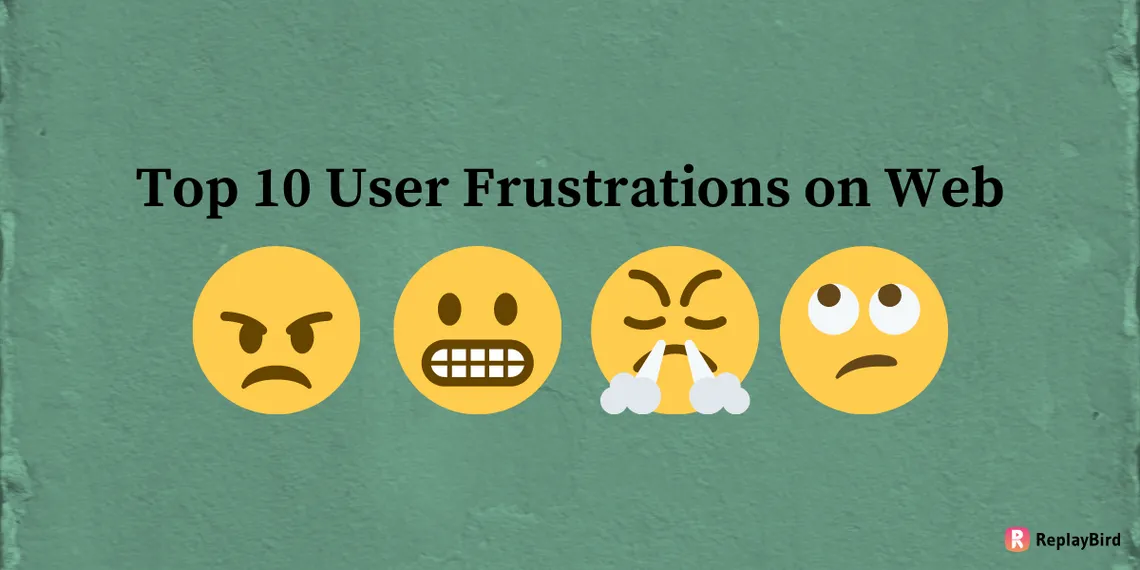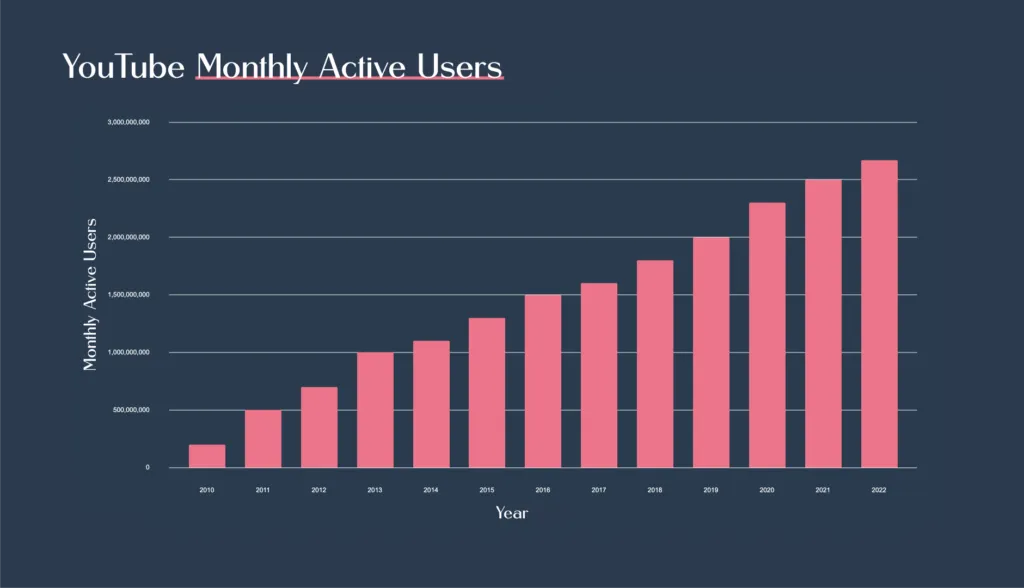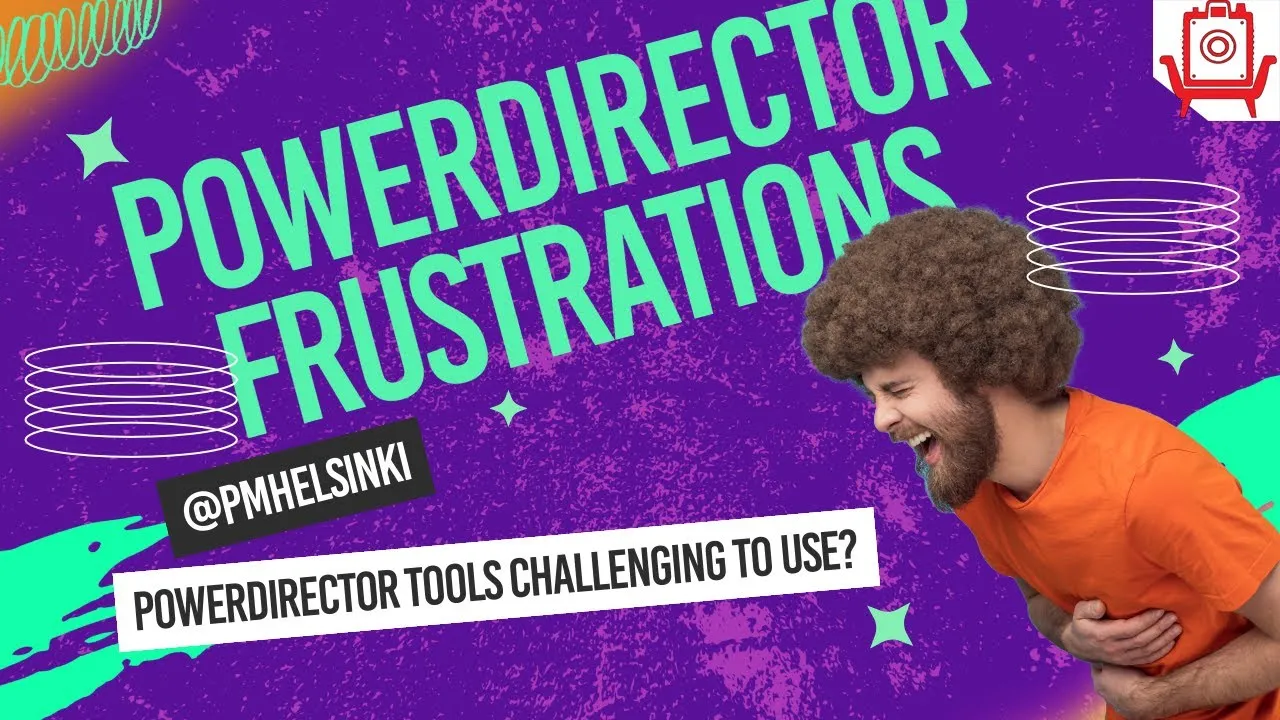YouTube has become a cornerstone of online entertainment and information, captivating millions worldwide. However, with its massive growth, user frustrations have also surged. In this blog post, we’ll explore what frustrates users on YouTube, diving into specific issues that impact their experience. From algorithmic challenges to content overload, understanding these frustrations is key to enhancing user satisfaction and engagement on the platform.
The Rise of YouTube as a Popular Platform

Launched in 2005, YouTube has transformed from a simple video-sharing site to a global phenomenon. Today, it boasts over 2 billion logged-in monthly users and serves as a vital resource for entertainment, education, and communication. But how did it achieve such immense popularity? Let’s break it down:
- Accessibility: YouTube is free to use, allowing anyone with internet access to upload or view videos. This democratization of content has attracted creators from every background.
- Diverse Content: From vlogs to tutorials, music videos, and documentaries, the variety is virtually endless. Users can find content on almost any topic imaginable, catering to diverse interests.
- Community Engagement: YouTube fosters interaction through comments, likes, and shares. This community aspect empowers creators and viewers alike, building a sense of belonging.
- Monetization Opportunities: The YouTube Partner Program has incentivized many to create content, as they can earn money through ads, sponsorships, and merchandise sales.
As a platform, YouTube continuously evolves, introducing features like live streaming, Shorts, and enhanced analytics for creators. However, with growth comes challenges, and many users find themselves grappling with various frustrations, which we will explore in subsequent sections.
Also Read This: How to Change the Background on YouTube Customizing Your Channel
Common User Complaints

YouTube, despite being a go-to platform for countless users, isn’t without its quirks and frustrations. Let’s dive into the most common complaints that often bubble up from the community.
- Ad Overload: Many users express irritation over the frequency and length of ads. With some ads being unskippable or excessively long, it can disrupt the viewing experience.
- Content Recommendations: Users frequently find that the recommendations are off the mark, leading to frustration when they want to discover new content but are inundated with irrelevant suggestions.
- Comment Section Issues: Toxicity and spam in the comment sections can be a significant turn-off. Users often lament the lack of moderation, which sometimes leads to a negative atmosphere.
- Video Quality Problems: Another common gripe is the inconsistency in video quality. Users may find that their videos default to lower resolutions, which can be bothersome, especially for visually rich content.
- Channel Monetization Concerns: Creators often voice frustrations regarding the monetization policies, feeling that the criteria are too stringent or unclear, impacting their ability to earn revenue.
Understanding these complaints helps illustrate the gap between user expectations and their actual experiences on the platform.
Also Read This: Exploring Creepy and Unknown Content on YouTube
The Impact of Algorithm Changes

YouTube's algorithm is a constantly evolving beast, and changes to it can have a profound impact on both users and creators alike. Let's explore how these shifts affect the viewing experience and content creation.
| Change Type | User Impact | Creator Impact |
|---|---|---|
| Increased Personalization | Users often feel overwhelmed as personalized content may sometimes prioritize popular videos over niche interests. | Creators can struggle if their content doesn’t fit the trending topics, leading to decreased visibility. |
| Adjustments in Trending Algorithms | Users might get frustrated if they notice that their favorite channels don’t appear in trending lists. | Creators may feel disheartened, as their hard work may go unnoticed if they don’t align with the current algorithm. |
| Demotion of Certain Content | This can lead to users missing out on videos they enjoy, especially if they prefer specific genres that suddenly lose traction. | Creators of those genres could see a significant drop in views and engagement, which can be disheartening. |
In summary, algorithm changes can create a ripple effect across the platform, affecting how viewers find and interact with content, while also shaping the landscape for creators trying to make their mark. Keeping an eye on these changes is crucial for both parties involved!
Also Read This: Is Rumble a Public Company? Exploring the Financial Side of the Platform
Advertising Overload and Its Effects
Have you ever found yourself watching a YouTube video, only to be interrupted by an avalanche of ads? You're not alone! Many users express frustration over what feels like an incessant barrage of advertisements. This advertising overload can significantly impact the viewing experience, leading to discontent among users.
First off, let’s break down what this overload means. YouTube’s monetization strategy relies heavily on ads, which can include:
- Pre-roll ads: Those pesky ads that play before the video starts.
- Mid-roll ads: Interruptions during the video that can happen multiple times.
- Banner ads: Ads that appear on the screen while you’re watching.
While ads are a necessary part of keeping the platform free, too many can drive users away. Here are some effects of advertising overload:
| Effect | Description |
|---|---|
| Decreased Engagement | Viewers may skip videos or stop watching entirely if they feel overwhelmed by ads. |
| User Annoyance | Frequent interruptions can lead to frustration, causing users to voice their dissatisfaction. |
| Ad Blindness | Over time, users may start ignoring ads, diminishing their effectiveness. |
In essence, while ads are vital for content creators and the platform, an overload can alienate users, leading to a less enjoyable experience. Finding the right balance is key!
Also Read This: Steps to Log Out of YouTube TV on All Devices
Content Moderation and Censorship Issues
Content moderation on YouTube is a double-edged sword. On one hand, it’s essential for maintaining a safe environment, but on the other, it can lead to accusations of censorship and inconsistency. Many users feel frustrated when their content gets flagged or removed for reasons that seem vague or arbitrary.
Let’s dive into some of the core issues surrounding content moderation:
- Inconsistent Enforcement: Users often report that similar content is treated differently based on the creator’s popularity or following.
- Lack of Transparency: Many creators are left in the dark about why their videos were demonetized or removed, leading to distrust.
- Automated Systems: YouTube employs algorithms to flag inappropriate content, but these automated systems can sometimes misinterpret context, leading to wrongful censorship.
Consider the impact of these issues:
| Issue | Impact |
|---|---|
| Creator Frustration | Content creators may feel their freedom of expression is stifled, impacting their willingness to produce content. |
| User Distrust | Viewers may begin to question the integrity of the platform, leading to a loss of loyalty. |
| Content Diversity | Over-regulation can lead to a homogenization of content, stifling creativity and diverse voices. |
In summary, while content moderation is crucial for safety, it must be balanced with transparency and fairness to avoid alienating users and creators alike.
Also Read This: Using AdBlock on Dailymotion to Eliminate Annoying Ads
7. Community and Creator Dynamics
When we think about YouTube, we often picture the vast array of content and the creators who produce it. However, there’s a more intricate web that connects these creators with their audiences: the community dynamics. This relationship can be both enriching and frustrating for users.
Creators thrive on feedback from their followers, shaping their content based on viewer preferences. Yet, this can sometimes lead to a disconnect. For instance, a creator might pivot their content style to please a vocal minority, leaving long-time fans feeling alienated. It’s crucial for creators to strike a balance between evolving their content and staying true to what attracted their audience in the first place.
Another layer of complexity arises from the comment sections. While these can foster community interaction, they’re often breeding grounds for negativity. Toxic comments can create a hostile environment for both viewers and creators. Here are some common issues:
- Trolling: Users may engage in trolling, which detracts from meaningful conversations.
- Silos: Communities sometimes form echo chambers, where dissenting opinions are silenced.
- Creator Fatigue: As creators engage more with their communities, they may experience burnout from constant pressure to meet expectations.
Ultimately, the community and creator dynamics on YouTube are a double-edged sword. They can lead to incredible collaboration and support, but also to misunderstandings and dissatisfaction.
Also Read This: Why Is Steve Banned from YouTube
8. Possible Solutions and Improvements
Addressing user frustrations on YouTube requires a multifaceted approach that benefits both creators and viewers. Here are some practical solutions that could enhance the overall experience:
- Improved Comment Moderation: YouTube should implement better tools for creators to manage comments. This could include AI-driven filters that highlight constructive feedback while minimizing negativity.
- Creator Support Programs: Establishing programs that help creators understand their audience better can bridge gaps. Workshops on audience engagement and mental health support could be invaluable.
- Enhanced Community Features: Introducing features that allow for more structured interactions, like community polls or Q&A sessions, can empower viewers to feel more involved.
- Algorithm Transparency: YouTube could benefit from being more transparent about how their recommendation algorithms work. This could help creators tailor their content more effectively while managing viewer expectations.
By focusing on these areas, YouTube can foster a more positive environment that enhances user satisfaction and strengthens community bonds. After all, a happy community leads to more engaged viewers and thriving creators!
Understanding User Frustrations with YouTube
YouTube is one of the most popular video-sharing platforms globally, boasting billions of users and countless hours of content. However, despite its widespread appeal, many users experience frustrations that can detract from their overall enjoyment. Understanding these frustrations is crucial for both users and content creators to enhance the platform's experience. Below are some common user frustrations:
- Ad Overload: Many users find the frequency and length of advertisements disruptive, often leading to frustration during viewing.
- Algorithm Limitations: The YouTube algorithm sometimes fails to recommend relevant content, causing users to miss out on videos they would enjoy.
- Content Moderation Issues: Users frequently express frustration over the inconsistency in content moderation, where some inappropriate content remains accessible while other benign content is removed.
- Comment Section Toxicity: The comment sections can often become toxic, deterring viewers from engaging in discussions or sharing their thoughts.
- Subscription Notification Issues: Many users report not receiving notifications for new uploads from subscribed channels, leading to missed content.
In addition to these points, user interface design can also contribute to frustrations. For example, frequent layout changes can confuse users, while the mobile app sometimes offers a less seamless experience compared to the desktop version.
| Frustration | Impact on User Experience |
|---|---|
| Ad Overload | Interrupts viewing, leading to user disengagement. |
| Algorithm Limitations | Reduces content discoverability, leading to dissatisfaction. |
| Content Moderation Issues | Creates uncertainty about content safety and appropriateness. |
| Comment Section Toxicity | Discourages positive community interaction. |
| Subscription Notification Issues | Leads to missed content and frustration over engagement. |
In conclusion, while YouTube serves as an essential platform for content consumption, addressing user frustrations is vital for improving the overall experience and satisfaction of its vast audience. By understanding these pain points, YouTube can work towards creating a more user-friendly environment that fosters engagement and enjoyment.